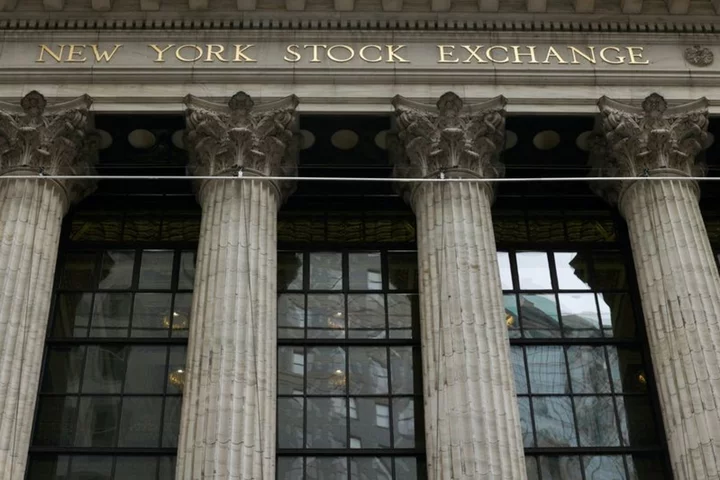By John McCrank and Gertrude Chavez-Dreyfuss
NEW YORK The last rates based on the tarnished London Interbank Offer Rate, or Libor, were published on Friday, marking a mostly quiet end of a nearly decade-long effort to move away from what was once dubbed the world's most important number.
While there has been some scrambling to amend contracts linked to Libor over the past month, the transition was well telegraphed and no major issues are expected, loan and derivatives market participants and lawyers said in interviews.
"I feel like it has been two to three years now that we have been re-papering all the legacy loans and legacy securities we purchased tied to Libor," said Scott DiMaggio, co-head of fixed income, at Alliance Bernstein.
"We're pretty comfortable with what we hold," he said.
Libor, a rate based on quotes from banks on how much it would cost to borrow short-term funds from one another, was first used by a Greek banker in a corner of London's syndicated loan market in 1969 to help price an $80 million loan for the Shah of Iran.
The benchmark was formalized in 1986 and has been used as a reference rate for a vast array of financial products, including student loans, credit cards, derivatives, corporate loans and mortgages, with over $370 trillion tied to it globally at its peak.
Regulators a decade ago decided to scrap it in favor or more tamper-proof alternatives, such as the Federal Reserve Bank of New York's Secured Overnight Financing Rate (SOFR), after banks were fined billions of dollars for attempting to manipulate Libor to turn a profit during the 2007-2008 financial crisis.
Friday at 11:55 a.m. British Summer Time (1055 GMT) marked the last publication for the 1-month, 3-month and 6-month U.S.-dollar Libor interest rates. Other U.S. dollar tenors were largely phased out for new contracts at the end of 2021 along with Libor rates linked to other currencies.
Derivatives markets based on Libor had already mostly moved to new benchmarks without major disruption, while some corners of the loan markets, such as syndicated loans, have been busy with contract amendments, market participants said.
"For the most part it's trending and looking good, but we're in the risk business so it's always important to be mindful that there could be some tail effects," or low probability but potentially disruptive events, said Tal Reback, head of KKR's global Libor transition effort across private equity, credit, capital markets and real estate.
The number one tail risk for loans that do not smoothly make the transition to another rate is that they could fall back to a more expensive rate, which also poses potential credit risk, she said.
To help minimize disruptions, the U.S. government passed the Libor Act in March 2022. The legislation allows an estimated $16 trillion of "tough legacy" contracts - those that expire after June 2023 and do not have fallback language specifying an alternative rate and thus cannot be amended - to fall back to SOFR, shielding them from related litigation.
Britain's Financial Conduct Authority also said it would allow the use of a synthetic version of 1-, 3- and 6-month U.S. dollar Libor settings, that are not representative of the outgoing Libor methodology, until September 2024 for tough legacy contracts not covered under the U.S. Libor Act.
Still, there are concerns around the transition similar to 'Y2K', the computer coding that was forecast to sow chaos in IT systems worldwide in the early hours of the new millennium on Jan. 1, 2000, said Gennadiy Goldberg, head of U.S. rates strategy, at TD Securities in New York.
"The best case scenario is crickets," he said.
(Reporting by John McCrank and Gertrude Chavez-Dreyfus; Editing by Alden Bentley and Stephen Coates)









